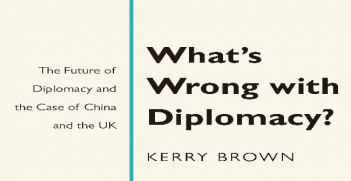Reading Room: Australia and Latin America

As an Australian focused on Latin America, I am frequently asked, “Why Latin America?” This edited book comes at a pivotal time in Australian-Latin American relations and provides a comprehensive analytical response to this oft-asked question. As Barry Carr and John Minns state in the introduction, “It is almost as if Latin America has been rediscovered by Australia nearly 200 years after most of the region’s countries declared independence from Spain.” A lack of mutual awareness between Australia and Latin America has been exacerbated by geographical distance and a focus on traditional trading partners. However, as the book highlights, globalisation and global interdependence have reshaped the potential for Australian and Latin American engagement.
Australians and Latin Americans alike can finally point to a body of work that shows Latin America is more than siesta and fiesta and Australia has more to offer than koalas and kangaroos. The book is structured as a collection of essays that span key areas including policymaking in Australia, government-to-government relations, political realities, education relations, trade and investment, foreign aid, the environment, the Latino community in Australia, media, culture and practical advice for doing business.
The depth and breadth of the book is reflective of it being a labour of love by many of the stalwarts of the Australia-Latin America academic community. Funded by the Council on Australia Latin America Relations (COALAR) at the Department of Foreign Affairs and Trade, it is the first of its kind to share perspectives on key trends and the opportunities and challenges for Australian engagement in the region.
The editors succeed in dispelling myths about Latin America as an underdeveloped region by detailing the incredible economic growth and transformation undergone in the last two decades. To understand the areas of complementarities, each chapter provides accounts of investment flows to and from the region in key areas including agriculture, energy and mining, education, culture and tourism. We are reminded that Australia and Latin America have more in common than we originally thought: similar to Australia, both Argentina and Brazil export foodstuffs to China, while Chile and Brazil sell China raw commodities.
It’s no surprise that Asia is the natural partner for Australia’s trade and investment flows. However, we would be remiss to ignore the increasing political and economic integration between the Asia-Pacific and Latin America.
Cognisant of the outdated negative stereotypes pervading the region, the editors highlight that tourism to Latin America is booming as an attractive destination for adventure and discovery. Many countries in the region emerged from decades of economic stagnation and dictatorship and are now experiencing a rebirth.
This book is a useful tool for policymakers thinking about Australia’s future in an increasingly interconnected global economy. It provides a compelling case for further engagement between Australia and Latin America.
Barry Carr and John Minns, eds, Australia and Latin America: Challenges and Opportunities in the New Millennium, ANU Press, 2014.
Zoe Dauth is program manager at the Council of the Americas in Washington, DC. She is a former council member of the Australian Institute of International Affairs Victoria.





